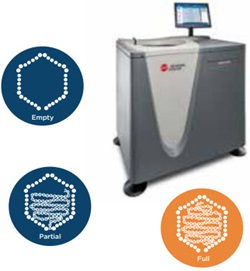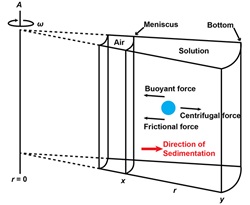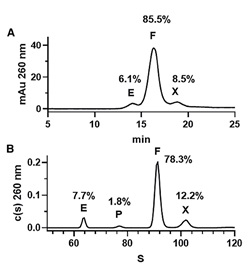Why should I use analytical ultracentrifugation (AUC) instead of other methods for AAV characterization?

Adeno-associated virus (AAVs) is rising rapidly as a preferred method for gene therapy. Rigorous characterization of these crucial therapeutics is becoming critical to ensure controlled production and patient safety. In particular, quantifying the ratio of full, empty, and partially-full particles is under high scrutiny. For this analysis, AUC is the gold standard and can deliver higher-resolution data compared to other techniques.
AAV Analysis with AUC
 Need for High-resolution AAV Analysis
Need for High-resolution AAV Analysis
AAVs are well-known as having variability in the amount of genetic load in the particles, where only those containing the full gene insert can elicit the desired function. Thus, AAV purification to isolate only the full particles is critical. Further, characterizing the ratio of functional (full) and non-functional (empty/partial) particles is paramount to optimize culture productivity and understand production consistency, establish dosing, and ensure patient safety.
AUC: A Unique Characterization Technique
 Analytical ultracentrifugation (AUC) is a unique approach for particle separation and characterization. With AUC, particles are often separated by varying sedimentation coefficient (S) – a collection of size, mass, shape, and density. Because AAV particles of varying load differ in mass and density, AUC excels at providing high-resolution data for analysis of such particles in solution, without the need or possible side effects of matrix interactions.
Analytical ultracentrifugation (AUC) is a unique approach for particle separation and characterization. With AUC, particles are often separated by varying sedimentation coefficient (S) – a collection of size, mass, shape, and density. Because AAV particles of varying load differ in mass and density, AUC excels at providing high-resolution data for analysis of such particles in solution, without the need or possible side effects of matrix interactions.
AUC Provides Higher-resolution Data
AUC has become well-known as the gold standard for quantitative assessment of AAV particle quality and fullness. Compared to anion exchange chromatography (AEX), for example, AUC offers much greater resolution and the clear identification of partials, where AEX falls short. These high-res AUC analyses are not only useful in final product QC, but also in cell culture development to optimize for productivity of full particles.

Analysis of empty (E), full (F), and partially-full (P) AAV particles with aggregates (X) via AEX (A) and AUC (B). Reproduced with permission from Wang et al.†
Summary
AUC can provide high-resolution information on AAV samples, including opportunities to quantitatively identify empty, full, and partially-full particles along with aggregates. Click here to learn more about getting started with AUC and learn about the new features of the Optima AUC.
† Wang et al. (2019). Mol Ther Methods Clin Dev, 15, 257-263. DOI: 10.1016/j.omtm.2019.09.006
For research use only. Not for use in diagnostic procedures.

